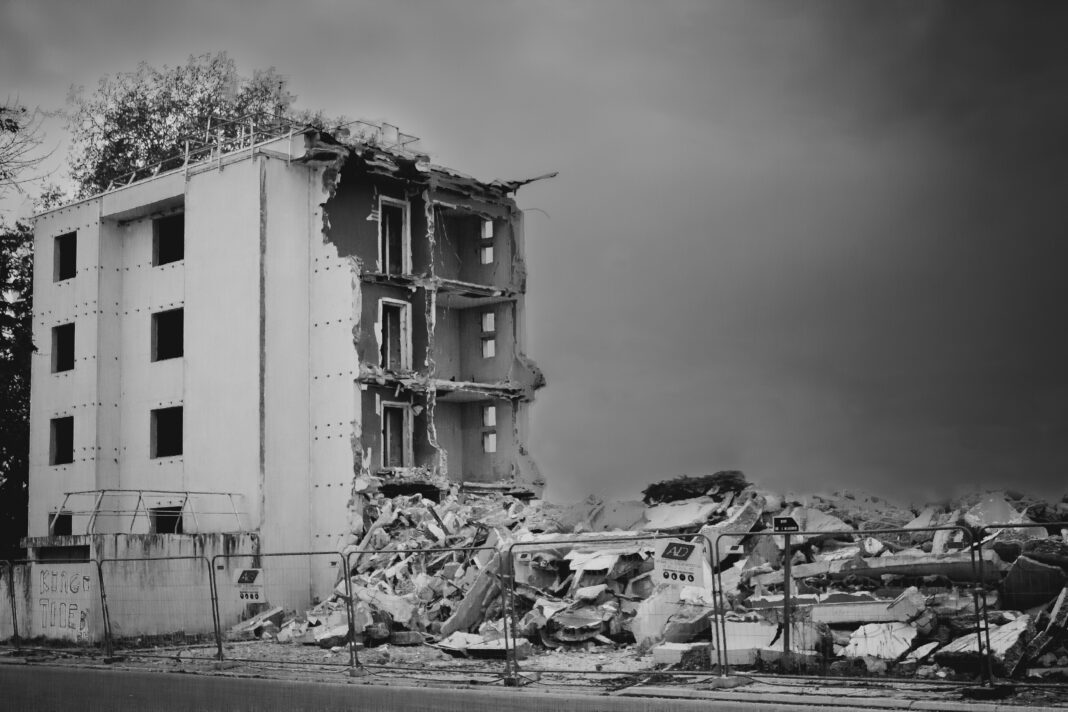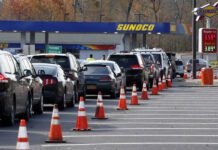If you live anywhere on the West Coast — from California up to Oregon and Washington — being ready for an earthquake isn’t optional. It’s essential. In this article, we’ll look at the reasons preparedness is so critical, especially for us, what it could look like when a major quake strikes, and how drills like California’s Big ShakeOut raise awareness and save lives.
The Reality: Earthquakes Can Set Recovery Back for Years
1. Infrastructure damage is widespread
A major quake can damage roads, bridges, utility lines, water and sewer systems, communications, hospitals, and more. Restoring all of that doesn’t happen overnight — or even in a few months.
Recent research into how the electrical grid might be impacted by a Cascadia Subduction Zone earthquake estimates that damage to substations and power systems could leave large areas without power for hundreds of days (seven-plus months) in some scenarios. arXiv
That’s just one system. Now imagine all the other systems (water, gas, telecom, transportation) needing repair too.
2. Supply chains and logistics break down
When infrastructure is badly damaged, supply routes can be severed. That means fewer trucks delivering food, water, medicine, fuel—and it can take a long time to reestablish reliable flows. In many past disasters, communities spent weeks or months cut off from essential supplies.
3. Social and psychological impacts linger
Displacement, job loss, schooling interruptions, trauma, and rebuilding homes all take years. Entire neighborhoods may need to be rebuilt. The emotional toll is massive and long-term.
4. Government and external help will be stretched
In a large, region-wide quake, federal or state emergency resources will be stretched across many affected zones. Local first responders and neighbor networks are often the first (and longest) lifeline. Disaster officials frequently warn that “you are your own first responder” for the first 72 hours or longer.
So if you wait for outside help, you might be waiting a long time.
Why the West Coast Is a High Priority for Earthquake Preparedness
Fault zones and seismic risk – Earthquake Preparedness
- The Cascadia Subduction Zone, which runs off the coasts of Oregon, Washington, and Northern California, is capable of producing magnitude 9.0+ quakes and large tsunamis. Wikipedia+1
- The San Andreas Fault system in California is long known as “the Big One” threat. Great ShakeOut+1
- Scientists are now exploring how the Cascadia zone and San Andreas system might be linked, meaning a quake in one might influence stress on the other. Axios
High population and built environment

Millions of people, dense cities, major infrastructure, and aging buildings make the West Coast particularly vulnerable. A similar magnitude quake in a region with less population or development would cause less disruption.
Cascading disasters
Many West Coast quakes come with secondary hazards: landslides, liquefaction, tsunamis (on coastal areas), fires, and aftershocks. These amplify damage and delay recovery.
Prolonged disruptions
Because the West Coast is so economically integrated and heavily dependent on infrastructure, disruptions in one area ripple outward. For example, if a major port is damaged, supply chains across the country can be affected.
All of that means being ready — personally, with your household and local network — is not just advisable, it’s survival planning.
What Earthquake Preparedness Looks Like: Building Your Resiliency
Here are key steps you can take to prepare now:
1. Secure your space
- Bolt heavy furniture (bookcases, cabinets) to wall studs.
- Anchor appliances, water heaters, shelves.
- Use latches on cabinets so doors don’t fly open.
- Store heavy items low so they don’t fall far or injure someone.
2. Create a family disaster plan
- Know safe spots in your home (under sturdy tables, away from windows).
- Plan how to communicate (text, meeting places).
- Decide on evacuation routes or rendezvous points.
- Practice “Drop, Cover, and Hold On.”
3. Build an emergency supply kit
Include at least:
- 3 days to 2 weeks of water (1 gallon per person per day)
- Nonperishable food
- Flashlight, extra batteries
- First aid kit
- Whistle, dust masks
- Portable radio (battery or crank)
- Handy tools, multipurpose knife
- Important documents in a waterproof container
- Extra cash
- Prescription medicines
- Supplies for pets
In earthquake-prone states like Washington, official guidance suggests being “2 Weeks Ready” (i.e., enough supplies for at least 14 days). mil.wa.gov
4. Strengthen your home
- Retrofit older buildings if possible (bolting foundations, reinforcing walls).
- If building new, follow modern seismic codes.
- Use flexible gas connectors and automatic shutoff valves.
- Seismic shutoff devices for utilities (gas, water) help limit damage.
5. Stay informed
- Sign up for local alert systems.
- Use earthquake apps (e.g., MyShake, ShakeAlert).
- Monitor local seismic and tsunami warnings.
6. Practice drills
- Regularly run through “Drop, Cover, Hold On.”
- Include household members (kids, elders, pets).
- Practice shutting off gas, water, and electricity lines (only if it’s safe to do so).

The Big ShakeOut: A Reminder & Practice for Everyone
To raise awareness and reinforce preparation, California’s annual ShakeOut drill is happening today. Great ShakeOut+1
- At 10:16 a.m. local time, residents, schools, businesses, government offices across the state will pause to “Drop, Cover, and Hold On.” KTVU FOX 2 San Francisco+3San Francisco Chronicle+3ABC7 Los Angeles+3
- The drill aims to simulate response to a magnitude 7.8 quake on the southern San Andreas fault and encourages people to test their readiness. ABC7 Los Angeles+2Governor of California+2
- Participation is massive: over 10 million people in California have registered in past years. San Francisco Chronicle+2Great ShakeOut+2
- The state is also pushing outreach, simulator “shaker trucks,” and public education during the event. KTVU FOX 2 San Francisco+2Governor of California+2
Even if you’re outside California (e.g., in Washington or Oregon), the spirit of “ShakeOut” is relevant. Many regions hold their own drills or encourage the same preparedness mindset. You can use the moment today to review your own readiness.
Why Preparedness Makes a Real Difference
- Survival and injury prevention: The first seconds and minutes of a quake matter. Knowing where to shelter and how to act can save lives.
- Reduced panic: Familiarity with plans and tools reduces fear and confusion during a disaster.
- Shorter recovery: Every measure you take beforehand (anchor your home, stock supplies) reduces the workload after a quake.
- Community resilience: If your neighborhood is prepared, you can help neighbors and share resources.
- Financial mitigation: Damage will happen. Having insurance, supplies, and a plan reduces losses and cost of recovery.
In effect, every step you take before an earthquake is like making a deposit in your “survivability account.”
What to Do Right Now (Especially on ShakeOut Day)
- Join the drill — at 10:16 a.m., wherever you are, pause and do “Drop, Cover, Hold On.”
- Review your emergency kit — make sure it’s up to date.
- Walk through your home — look for items to secure or hazards to fix.
- Update your plan — check that phone numbers, meeting places, and routes are current.
- Talk about it — involve your household, neighbors, and coworkers. Make preparedness part of the conversation.
Final Thoughts
Earthquakes are unpredictable. The timing and location are uncertain. What isn’t uncertain is the necessity of being prepared — especially on the West Coast, where fault zones underlie many of our major communities. Because when a big quake strikes:
- Recovery will take years at scale.
- External aid will be stretched.
- Infrastructure damage will affect nearly everything we depend on.
But preparedness gives you agency. It reduces risk, fosters safety, and improves the chances of recovery. Today’s ShakeOut drill is a reminder that readiness is not passive — it’s proactive.








